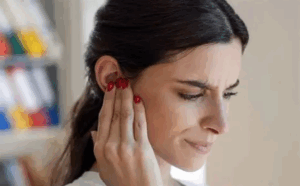When someone tells you that they are having a migraine, you may immediately think of a terrible headache. You picture them sitting in bed with the shades drawn, an ice pack on their head, and maybe even ear muffs over their ears. Their headache is often bad enough to keep them home from school or work.
BUT HAVE YOU EVER HEARD OF A MIGRAINE WITHOUT A HEADACHE?
Some patients may experience flashing lights without headaches in a condition called ocular migraine. Tingling in the face or extremities, ear/sinus pressure, ringing in the ears, and even temporary blindness can occur in migraine sufferers.
Another type of migraine that may occur with or without headache is called a vestibular migraine. Patients experience balance symptoms along with associated migraine symptoms. They may feel off balance, nauseous, or like they are rocking on a boat. Others feel like their head is floating or like they cannot focus their eyes. There are often sensitivities to light, sound, or motion. Car, sea, and air sickness are common complaints.
There is no test to diagnose a vestibular migraine. Rather, when examination and testing of the inner ears is normal and the above symptoms are present, vestibular migraine is diagnosed by excluding other causes.
Migraines of all types are often triggered by many foods and drinks in American diets. Common triggers include chocolate, wine, caffeine, sugars, and preservatives. Poor sleep and stress also trigger migraines.
Many patients have a history of migraines and take prescription medications to stop them when one occurs. It is important to realize that if you are dizzy, nauseous, or off balance without headaches, this does mean that migraine is not the cause. As needed headache medications do very little to treat vestibular symptoms, even if they relief headaches. Medications to prevent migraines typically work better to relieve vestibular symptoms.
At the Dallas Ear Institute, we diagnose and treat many inner ear problems that cause dizziness. Sometimes we will diagnose patients with vestibular migraines by examining and testing the inner ear and proving that it is normal. In these cases, we may refer patients to a neurologist with specialty training in managing migraines or a physical therapist for vestibular rehabilitation. Call to schedule an appointment.


